Introduction
How many times have you heard an expert say that you should invest in property markets with high population growth? It’s a no-brainer, right?
WRONG!
High population growth doesn’t mean what you probably think it does regarding capital growth. In fact, it could mean the complete opposite.
The theory
The theory makes sense: assume a fixed number of properties and a growing number of people who need a property. The increased demand for a limited supply equates to price rises.
Supply & demand
The key to getting high capital growth is finding markets in which demand exceeds supply and to the greatest degree.
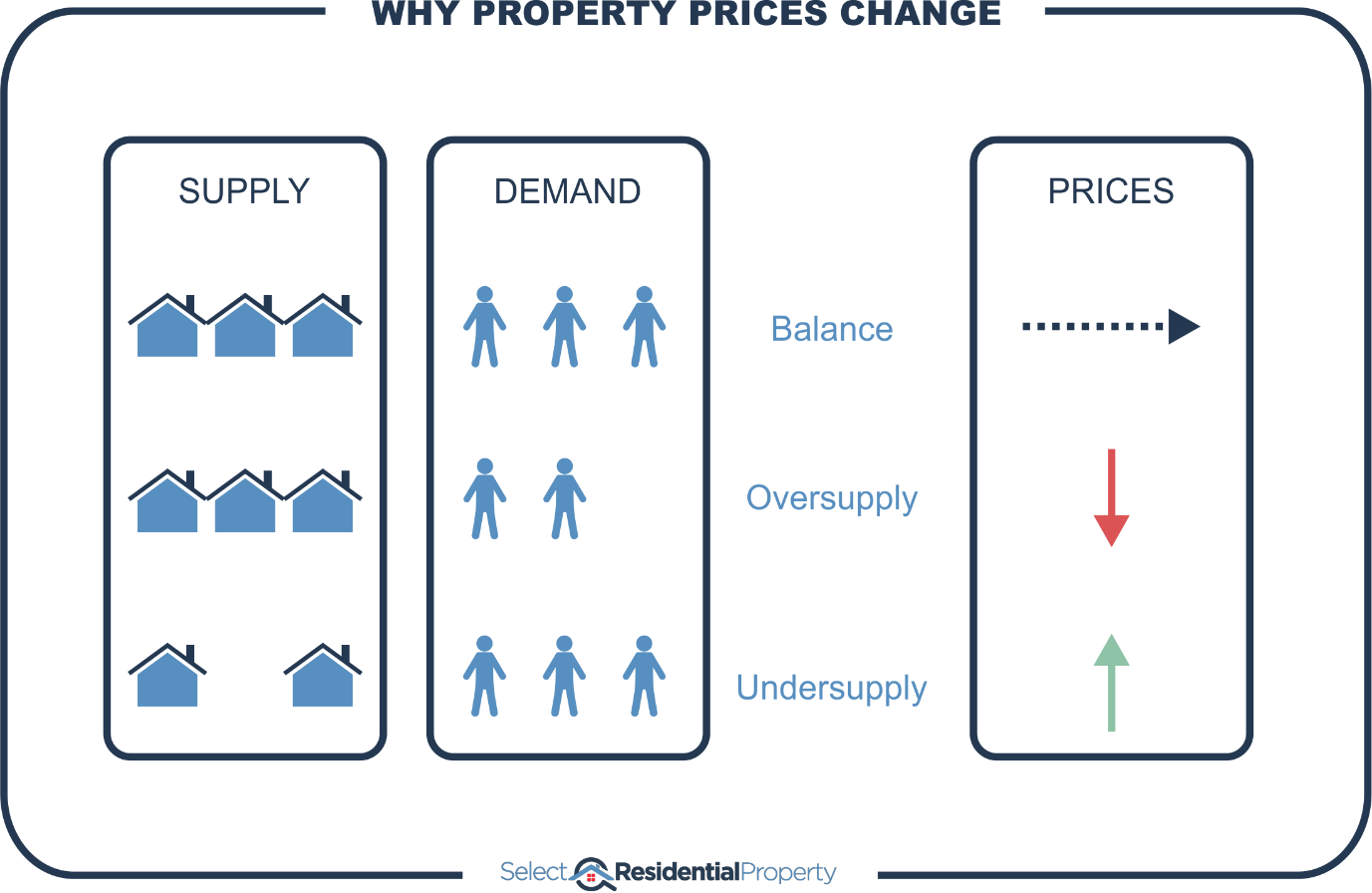
It’s a fundamental economic law. If demand exceeds supply (undersupply), prices rise.
Although the theory makes sense, the practical application of the theory has some problems…
Problem 1 – you’re lucky if demand matches supply
People do not move into a suburb living on the streets waiting for property to become available. Instead, they move into an already vacant dwelling. Imagine 100 new houses are built.
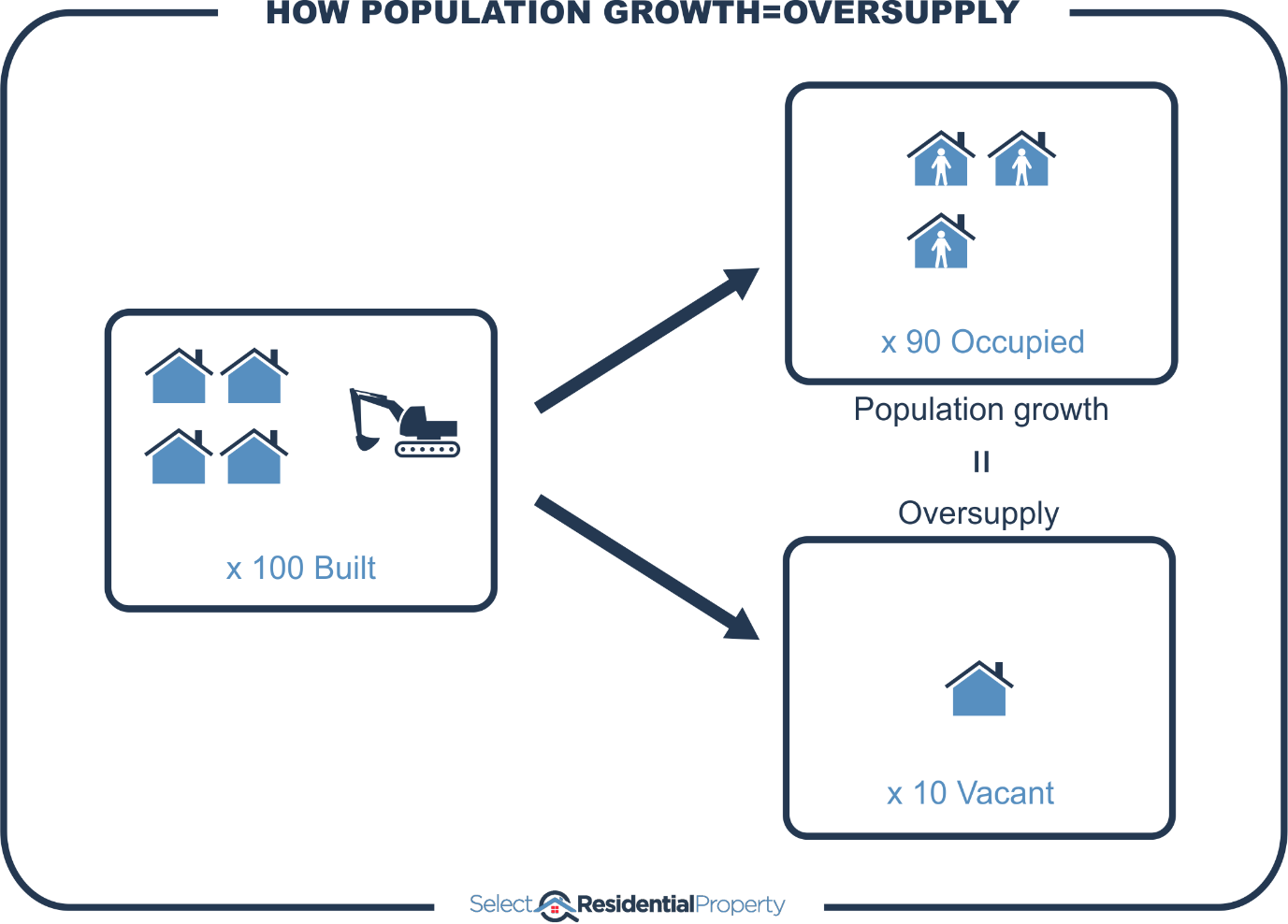
If only 90 are occupied, then there are 10 over-supplied. But the population increased by 90 new households.
Population growth at the suburb level never measures a case where demand exceeds supply. What we really need is the number of people who missed out.

Problem 2 – babies don’t buy houses
If births are the predominant cause of population growth, there won’t be pressure on prices to rise.
Problem 3 – how populations grow
There are only three ways in which a suburb’s population can grow:

- Bigger families – i.e. more people living in the same dwelling
- Reduced vacancies – i.e. fewer empty dwellings
- More dwellings
Bigger families
Stuff more people in each property.
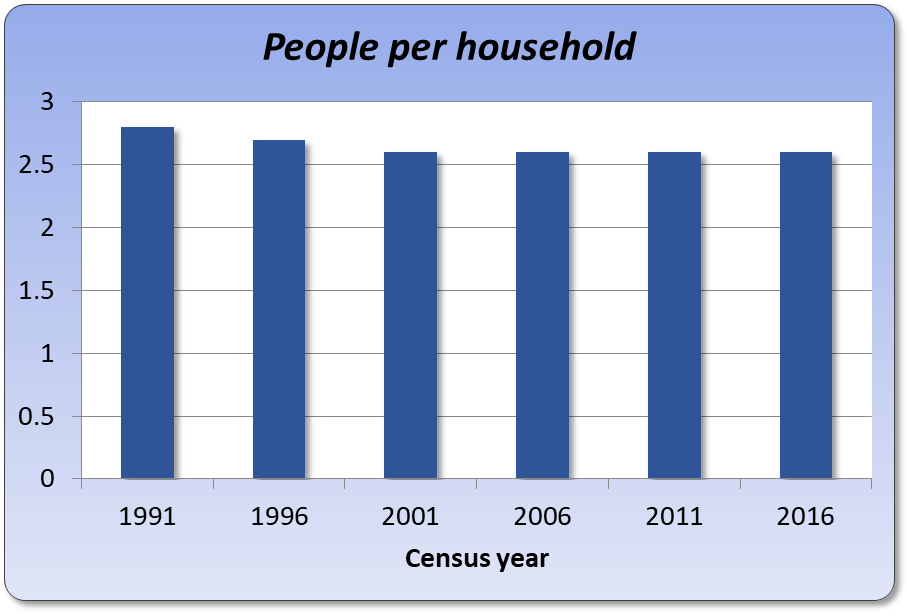
The density of people per household for the last 30 years has decreased, not increased.
Anyway, if a growing population makes do with the same number of dwellings, there’s no pressure on prices to rise.
Reduced vacancies
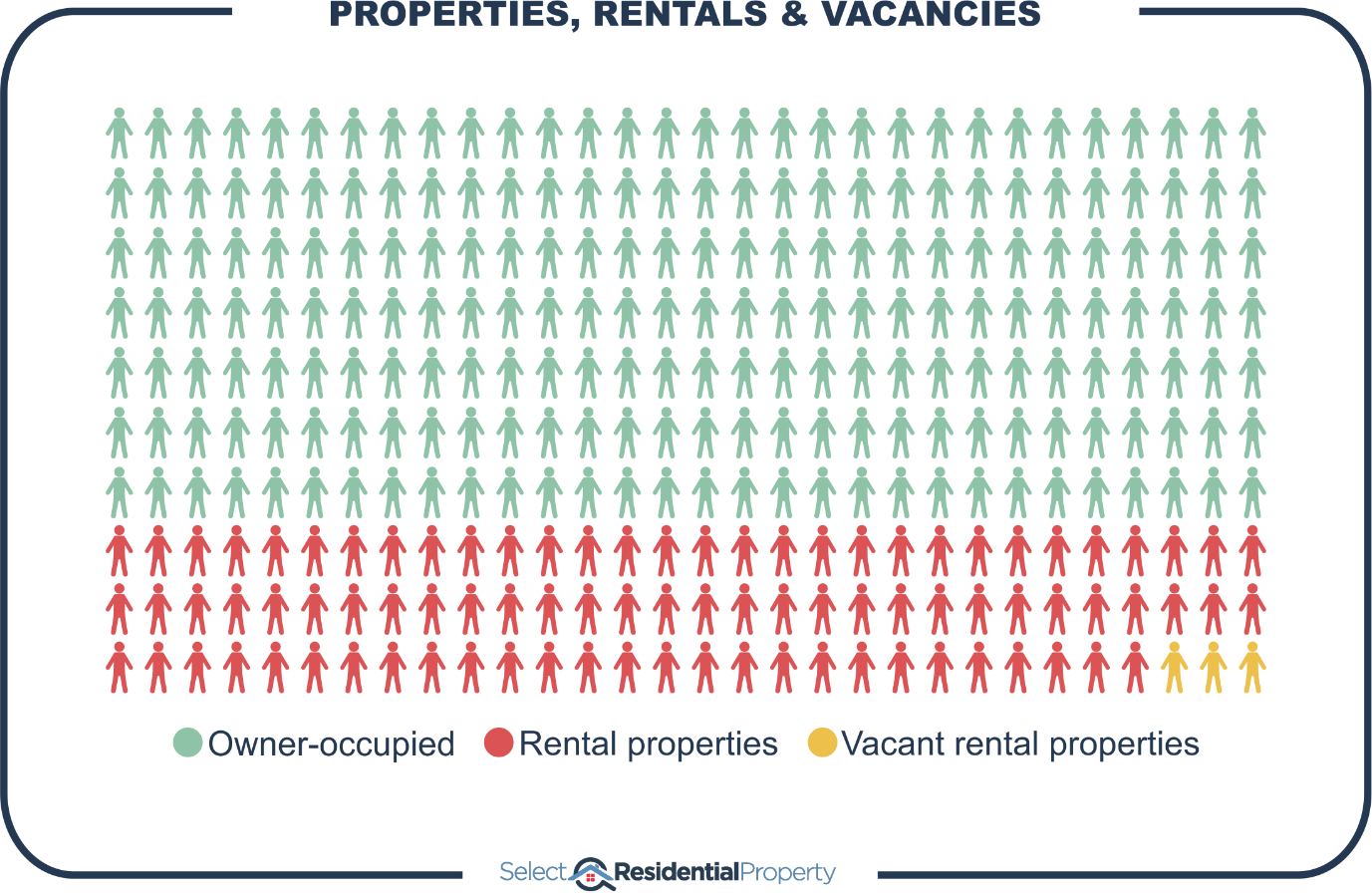
About 30% of properties in a typical Australian suburb are rentals. If 3% of those rentals are currently vacant, then the population can grow by about 1% without any new dwellings being built.
In other words, you would need the lowest vacancy rates in history just to increase the population 1% by this method.
More dwellings
The 3rd way in which population grows in a suburb is the only way in which it can happen in a significant way. The major reason why a suburb experiences big population growth is through heavy development activity – more homes.
“I’d prefer to buy in a suburb where population growth is simply impossible.”
About population growth forecasts
E.g.:
“The population is expected to increase by 30,000 people for the region over the next 10 years”
You can picture a queue of people lining up at the gates wanting to get in. But the estimate is actually based on supply.
Council and developers figure out how many more apartments can be built…

…and what land can be cleared to build new houses. The forecast population growth is based more on what can be supplied not so much on what’s demanded.
Growth corridors
BTW, the term, “growth corridor”, is often used by developers. It doesn’t mean “capital” growth.
Capital growth can happen with zero population growth
Interestingly, capital growth can happen with zero population growth.
No denser development
A council can decide they’re at max. density for now and they stop any zoning changes. If there’s no vacant land to develop, then the population can’t increase significantly. This can last for decades even in major cities. But those areas haven’t had periods of zero capital growth for that long.
Greenfield estate
What about a massive tract of vacant land that is land-banked for 20 years? The land may double in value in that time with zero population growth.
But these are just hypothetical examples. Let’s see some real cases:
[SHOW CHART…
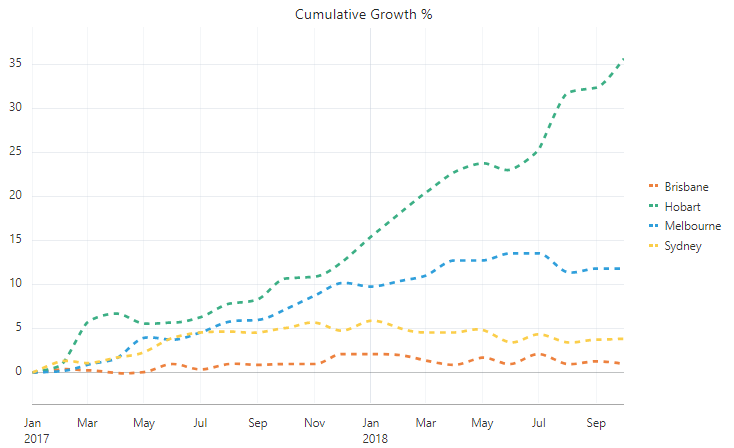
…]
This chart shows the capital growth of some cities in Australia you may have heard of. For the period shown, Hobart was the best performer with about triple the growth of second best. But Hobart has had population growth about a 5th that of the rest of the country for the 5 years up to the end of 2018.
Some more examples:
Toowoomba
Pop. growth of 0.3% p.a. from 2006 to 2011
Cap. growth of 3.8% p.a. from 2011 to 2016
Cairns
Pop. growth of 6.4% p.a. from 2006 to 2011
Cap. growth of 1.8% p.a. from 2011 to 2016
Townsville
Pop. growth of 4.1% p.a. from 2006 to 2011
Cap. growth of -1.9% p.a. from 2011 to 2016
Sydney
Pop. growth of 1.4% p.a. from 2006 to 2011
Cap. growth of 9.4% p.a. from 2011 to 2016
But Cairns had whopping population growth, literally more than 4 times faster than the national average. But what happened next, it had less capital growth than Toowoomba!
Sydney had population growth bang on equal to the national average yet had well-above average capital growth.
4 examples of completely contradictory cases. Population growth and capital growth do not go hand in glove.
A couple more issues
The data comes from census and is delayed in publication. At best it’s a year out of date and at worst 6 years out of date.
Also, it’s a lag indicator, it tells us what has happened, but can’t really tell us what will happen.
Conclusion
Population growth is not all it’s cracked up to be. At the suburb level it’s more likely to be an indicator of oversupply than an indicator of demand. At the macro level it seems to hold true, but investors can’t buy a city, so it’s practically useless.
This was a cut-down version of topic #1 in Jeremy’s Expert Busting Series.
....................................................................................
 Jeremy Sheppard is head of research at DSRdata.com.au.
Jeremy Sheppard is head of research at DSRdata.com.au.
DSR data can be found on the YIP Top suburbs page.
Click Here to read more Expert Advice articles by Jeremy Sheppard
Disclaimer: while due care is taken, the viewpoints expressed by contributors do not necessarily reflect the opinions of Your Investment Property.
